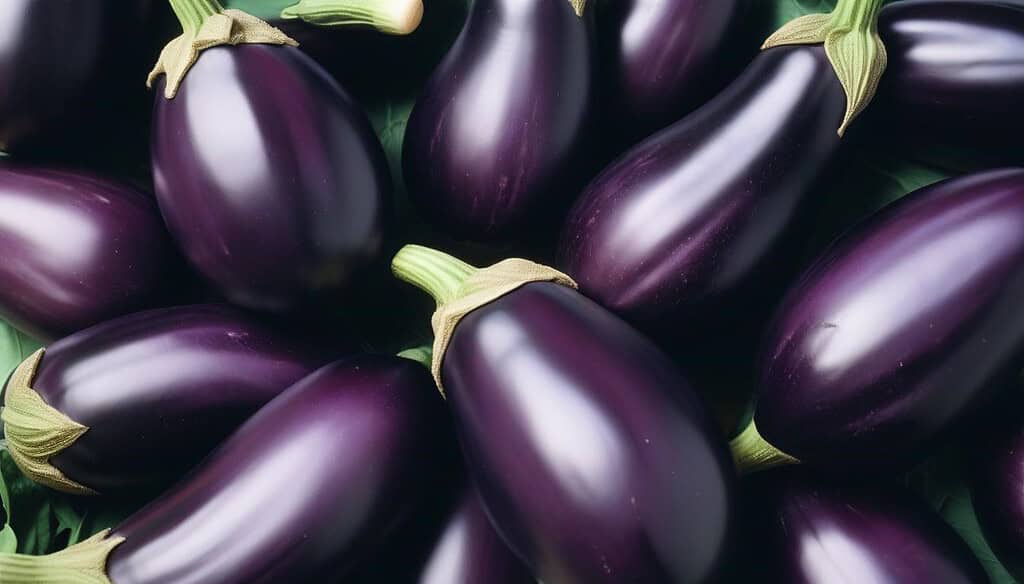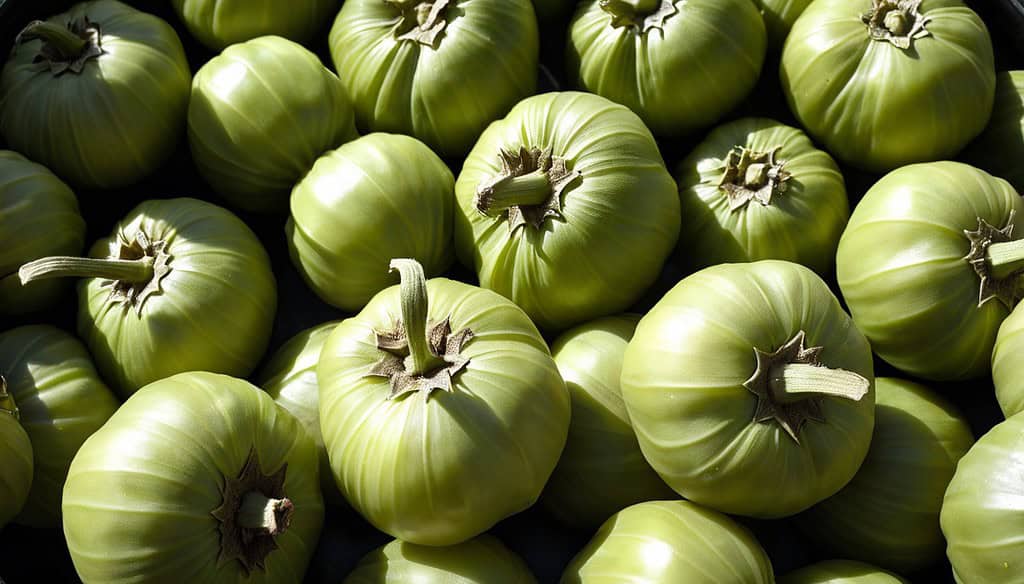Table of Contents
Solanaceae Fruits: Nutritional Richness With Distinct Flavors

Solanaceae Fruit – Nutritional Richness With Distinct Flavors
Solanaceae fruits, also known as members of the Nightshade family, are among the most significant fruit families in the world. Despite often being classified as vegetables due to their culinary uses, these fruits include well-known staples like tomatoes, peppers, and eggplants. Their importance spans nutrition, flavor, health, and global trade, making them an essential part of diets and economies alike.
One of the standout features of Solanaceae fruits is their vibrant diversity. These fruits come in an array of colors, from the deep reds of ripe tomatoes to the bright yellows of certain peppers, adding visual appeal to dishes. Alongside their aesthetic value, they are nutritionally rich, offering essential vitamins, minerals, and antioxidants that promote health and well-being. For example, tomatoes are an excellent source of vitamin C, while eggplants provide dietary fiber.
The distinct flavors of Solanaceae fruits also make them culinary favorites. The fruits of the Solanaceae family vary significantly, encompassing the intense spiciness of chili peppers and the gentle sweetness of mature bell peppers, thereby appealing to a diverse array of palates. Additionally, some fruits in this family, such as goji berries, have medicinal properties and are valued for their potential health benefits, including boosting immunity and improving eye health.
Economically, Solanaceae fruits play a critical role in agriculture and trade. They are cultivated globally and form a cornerstone of various cuisines, ensuring their demand remains high. This widespread cultivation reflects their adaptability to different climates and their significance as a food source.
In conclusion, Solanaceae fruits combine color, flavor, nutrition, medicinal benefits, and economic value, cementing their place as one of the most important fruit families worldwide. Though often mislabeled as vegetables, their true identity as fruits highlights their biological and agricultural versatility. Next, we are going to discuss the 8 most important and well-known Solanaceae fruits.
1. Solanaceae Fruits: Tomatoes

Solanaceae Fruits – Tomatoes
Tomatoes are one of the most widely consumed Solanaceae fruits around the world. Native to western South America, this fruit is a staple in many kitchens, valued for its versatility and rich flavor. Tomatoes belong to the Nightshade family, yet they are often mistaken for vegetables due to their common culinary use in savory dishes. They are used fresh in salads, sauces, and salsas, and their concentrated form, such as in ketchup or paste, is a key ingredient in many processed foods.
Nutritionally, tomatoes are rich in vitamins and minerals, particularly vitamin C, potassium, and folate. They are also an excellent source of antioxidants, such as lycopene, which has been linked to a variety of health benefits, including reduced risk of certain types of cancer and heart disease. The red color of tomatoes is due to lycopene, a potent antioxidant that has gained attention for its potential to fight oxidative stress in the body.
Tomatoes have a wide range of culinary uses, from fresh to cooked preparations. When heated, tomatoes release more lycopene, making tomato sauce and paste particularly beneficial. They are also valued for their tangy and slightly sweet flavor, which complements both sweet and savory dishes. Their ability to absorb and enhance other flavors makes them an essential ingredient in cuisines worldwide, including Italian, Mexican, and Mediterranean dishes.
Economically, tomatoes play a major role in global agriculture. They are one of the most widely cultivated fruits, with major producers including China, India, and the United States. Tomatoes are integral to both fresh markets and the food processing industry, making them a key agricultural commodity. Their adaptability to various climates and soil types further underscores their importance in the agricultural sector.
2. Solanaceae Fruits: Chili Peppers

Solanaceae Fruits – Chili Peppers
Chili peppers, members of the Solanaceae fruits, are renowned for their heat and distinctive flavor, making them a staple in cuisines worldwide. Native to the Americas, they were introduced to Europe and beyond following the Columbian exchange. Chili peppers are cultivated in diverse climates and are now widely grown in regions such as Asia, Africa, and Europe. They belong to the Capsicum genus, with many varieties, including bell peppers, jalapeños, habaneros, and cayenne. While bell peppers are sweet, the heat in chili peppers comes from a compound called capsaicin, which is concentrated primarily in the seeds and membranes.
Nutritionally, chili peppers are packed with vitamins, particularly vitamin C, which supports immune health, skin regeneration, and wound healing. Additionally, they contain substantial amounts of vitamin A, beneficial for eye health, and vitamin B6, which supports nerve function. Chili peppers are also rich in antioxidants that help combat oxidative stress, thereby protecting the body from chronic diseases such as heart disease and certain cancers. Capsaicin itself has been studied for its potential health benefits, including pain relief, metabolism-boosting, and even its role in reducing inflammation.
The diverse range of chili peppers allows them to be used in a variety of culinary preparations. Fresh chili peppers are commonly used in salsas, sauces, and pickles, while dried chilies are often used in spice blends and powders like chili flakes, paprika, and cayenne pepper. They are key ingredients in many cuisines, such as Mexican, Indian, Thai, and African, where they provide both heat and depth of flavor. The intensity of heat varies depending on the variety, with some peppers like the Carolina Reaper being among the hottest in the world, while others like bell peppers contain little to no capsaicin.
Economically, chili peppers are significant for both fresh markets and the spice industry. They are grown in large quantities, particularly in countries like India, China, and Mexico. The global demand for chili peppers continues to rise, driven by both their culinary uses and their increasing popularity in the health and wellness market. Capsaicin, the active compound in chili peppers, is also used in topical creams and ointments for pain relief, adding to the economic value of these Solanaceae fruits.
3. Solanaceae Fruits: Eggplants (Aubergines)

Solanaceae Fruits – Eggplants (Aubergines)
Eggplants, also known as aubergines in some regions, are another key member of the Solanaceae fruits. Native to India and domesticated in Southeast Asia, eggplants have spread across the globe and are now integral to various cuisines, especially in Mediterranean, Middle Eastern, and Asian dishes. Eggplants have a distinct appearance, typically purple in color with glossy skin, although other varieties can be white, green, or even striped. They are commonly used in savory dishes, such as stews, curries, and grilled preparations.
Nutritionally, eggplants are low in calories and contain a moderate amount of fiber. They are a good source of vitamins like vitamin C, vitamin K, and some B vitamins, including folate. Eggplants are also rich in minerals such as potassium and magnesium. They contain antioxidants, such as Nasunin, a compound found in the skin that has been shown to have protective effects on cells. Nasunin helps combat oxidative stress, which can contribute to aging and chronic diseases.
Eggplants are prized for their ability to absorb and impart flavors. Their spongy texture allows them to soak up sauces and oils, making them a favorite in dishes where they are sautéed, grilled, or roasted. In Mediterranean cuisine, eggplants are used in dishes like moussaka and baba ghanoush, while in Indian cuisine, they are often cooked in spiced curries or stuffed with various fillings. The subtle bitterness of eggplant, which can be reduced by salting and draining, gives it a unique flavor profile that complements a variety of ingredients.
Economically, eggplants are an important crop in many countries, with major producers including China, India, and Egypt. They are grown in both tropical and temperate climates and are consumed in large quantities globally. Eggplants are commonly found in fresh markets, and their culinary importance has contributed to their widespread cultivation. In addition to their fresh market value, eggplants are also processed into various products, such as frozen and canned preparations, further enhancing their economic significance.
4. Solanaceae Fruits: Bell Peppers

Solanaceae Fruits – Bell Peppers
Bell peppers, known for their sweet and mild flavor, are one of the most popular Solanaceae fruits worldwide. Part of the Nightshade family, bell peppers are native to Central and South America but are now grown in many parts of the world. They are available in a variety of colors, including red, yellow, green, and orange, with each color offering slightly different flavor profiles. Bell peppers are commonly used in salads, stir-fries, and as toppings for pizzas and sandwiches.
Nutritionally, bell peppers are incredibly rich in vitamin C, offering more than twice the daily recommended intake in a single serving. They also provide a good amount of vitamin A, due to the presence of carotenoids like beta-carotene, which supports eye health. Bell peppers are low in calories and high in water content, making them a refreshing and healthy addition to any meal. They also contain smaller amounts of vitamins B6 and folate, along with minerals like potassium and manganese.
In terms of flavor, bell peppers are known for their mild sweetness and crisp texture. The green variety, which is harvested before fully ripening, tends to be more bitter and less sweet than the red, yellow, or orange varieties. Red bell peppers, which are fully ripe, are sweeter and richer in flavor. Bell peppers are often eaten raw in salads or as a crunchy snack, but they can also be cooked in a variety of ways, such as grilling, roasting, or stir-frying. Their ability to add both color and flavor to dishes makes them a favorite in a wide range of cuisines.
Economically, bell peppers are one of the most cultivated crops globally. They are grown in many countries, with major producers including China, Mexico, and the United States. Bell peppers are in high demand both in fresh markets and in the processed food industry, where they are used in products such as frozen vegetables, pickles, and sauces. Their adaptability to different climates and their widespread culinary use ensure their continued importance in the agricultural sector.
5. Solanaceae Fruits: Tomatillos

Solanaceae Fruits – Tomatillos
Tomatillos, often associated with tomatoes due to their similar appearance, are another important member of the Solanaceae fruits. Native to Mexico and Central America, tomatillos have been cultivated for thousands of years and are central to traditional Mexican cuisine. They are often mistaken for green tomatoes, but unlike tomatoes, tomatillos are encased in a papery husk that is removed before consumption. They have a tart and slightly citrusy flavor that adds a unique element to dishes, making them an essential ingredient in many Mexican salsas, sauces, and stews.
In terms of nutrition, tomatillos are low in calories and packed with essential vitamins and minerals. They are an excellent source of vitamin C, which is vital for the immune system, skin health, and collagen production. Tomatillos also provide a good amount of fiber, which aids in digestion and supports heart health. In addition, they contain a variety of antioxidants, including flavonoids and carotenoids, which help fight free radicals in the body, reducing the risk of chronic diseases such as cancer and cardiovascular diseases.
Tomatillos are incredibly versatile in the kitchen. They can be used raw in fresh salsas or roasted to bring out their natural sweetness and complexity. The distinctive tartness of tomatillos makes them ideal for creating flavorful sauces, such as green salsa, which is often paired with grilled meats, tacos, or tortilla chips. Roasting tomatillos with garlic and onion enhances their flavor, making them an excellent base for stews or soups. Their unique flavor profile complements the richness of meats, beans, and other vegetables, adding a fresh, tangy note to a wide range of dishes.
Economically, tomatillos are primarily grown in Mexico, where they are a key crop, though they are also cultivated in the United States and other countries. The growing demand for Mexican cuisine and the increasing use of tomatillos in international markets have boosted their production. Tomatillos are available in fresh markets and are often sold in their husked form or as part of prepared products like salsa verde, highlighting their significance in both fresh food markets and the processed food industry. As global interest in Mexican food continues to grow, tomatillos will likely play an increasingly important role in the global agricultural economy.
6. Solanaceae Fruits: Ground Cherries (Cape Gooseberries)

Solanaceae Fruits – Ground Cherries
Ground cherries, also known as cape gooseberries, are small, round fruits that belong to the Solanaceae fruits family. Native to South America, they are now grown in many parts of the world, including Africa, Asia, and the United States. Ground cherries are encased in a papery husk, similar to tomatillos, which is removed to reveal the bright yellow or orange fruit inside. These fruits have a sweet-tart flavor that is often described as a cross between a pineapple and a cherry, making them a popular choice for both fresh consumption and culinary applications.
In terms of nutrition, ground cherries are an excellent source of vitamins A and C, both of which play crucial roles in maintaining immune health and promoting healthy skin. They are also abundant in fiber, which aids in regulating digestion and preventing constipation. Ground cherries contain antioxidants such as carotenoids and flavonoids, which protect the body against oxidative stress and help fight inflammation. These compounds may also contribute to improved eye health and a reduced risk of chronic conditions like heart disease and diabetes.
Ground cherries can be enjoyed fresh, straight from the husk, or used in a variety of culinary applications. They are commonly added to fruit salads, desserts, and jams, where their sweet-tart flavor provides a unique contrast to other fruits. Ground cherries are also used to make sauces and syrups, and their natural sweetness makes them a popular ingredient in smoothies and baked goods. In some cultures, they are even used to make traditional liqueurs and wines. The versatility of ground cherries makes them a favorite among chefs and home cooks alike, and their unique flavor profile adds a distinctive touch to both sweet and savory dishes.
Economically, ground cherries are a niche but growing crop. While they are not as widely cultivated as other Solanaceae fruits, their popularity is rising, especially in specialty markets. They are grown in small quantities in regions such as South America, the United States, and parts of Europe. The increasing demand for exotic fruits and the growing trend of incorporating unique, nutrient-dense foods into diets have contributed to the expansion of ground cherry cultivation. As more people become aware of their nutritional benefits and culinary potential, ground cherries are likely to become a more prominent fruit in global markets.
7. Solanaceae Fruits: Tamarillo

Solanaceae Fruits – Tamarillo
Tamarillo, commonly referred to as the tree tomato, is one of the most distinct Solanaceae fruits. Native to the Andes region of South America, tamarillo has a unique appearance, with a glossy skin that ranges in color from yellow to red to purple. Its flesh is tangy, sometimes a little sweet, and its flavor has been compared to a cross between tomatoes and citrus fruits. Tamarillo is a versatile fruit that can be used in both savory and sweet dishes, and it is popular in many cuisines, particularly in South America and parts of Asia.
Nutritionally, tamarillo is an excellent source of vitamins, especially vitamin C, which supports immune function and skin health. It also contains a variety of antioxidants, including flavonoids, which help reduce oxidative stress and inflammation in the body. Tamarillo is a good source of dietary fiber, which aids digestion and supports cardiovascular health. Additionally, tamarillo provides some vitamin A, which is essential for maintaining healthy vision and immune function, as well as potassium, which helps regulate blood pressure.
Tamarillo is often eaten fresh, and its tangy flavor makes it an excellent addition to fruit salads or as a garnish for savory dishes like grilled meats and salads. It is also used in cooking, particularly in the form of sauces, jams, and chutneys, where its acidic and sweet flavors complement meats, cheeses, and vegetables. Tamarillo can be roasted or grilled, which helps enhance its natural sweetness, or it can be blended into smoothies and beverages. Its versatility makes it a prized fruit in many culinary traditions, where it adds a distinct flavor to a wide range of dishes.
Economically, tamarillo is primarily grown in countries such as Ecuador, Peru, and New Zealand, where the fruit thrives in temperate climates. While not as widely available as other fruits, tamarillo is gaining popularity in niche markets and specialty grocery stores, particularly in regions where consumers are seeking new and exotic fruits. Its unique flavor profile and nutritional benefits have made it an attractive option for health-conscious consumers, contributing to its rising demand.
8. Solanaceae Fruits: Goji Berries

Solanaceae Fruits – Goji Berries
Goji berries, also known as wolfberries, are small, bright red fruits that have gained popularity worldwide for their purported health benefits. Native to China, goji berries have been used in traditional medicine for centuries due to their high antioxidant content and nutritional richness. They belong to the Solanaceae fruits family, and despite their small size, they pack a punch in terms of both flavor and health benefits. Goji berries are commonly eaten in their dried form; however, they can also be found fresh in certain markets.
In terms of nutrition, goji berries are rich in vitamins, particularly vitamin C, which is essential for immune health and collagen production. They also provide significant amounts of vitamin A, which promotes eye health, and contain various B vitamins, which support energy metabolism. Goji berries are a good source of dietary fiber, which aids digestion, and they contain minerals such as iron and potassium. Furthermore, goji berries are loaded with antioxidants, including carotenoids, flavonoids, and polysaccharides, which are believed to have anti-aging, anti-inflammatory, and immune-boosting properties.
Goji berries are versatile in the kitchen and can be incorporated into both sweet and savory dishes. They are commonly added to smoothies, trail mixes, and granola bars, or used as a topping for yogurt and oatmeal. In Chinese cuisine, goji berries are often used in soups, teas, and tonic drinks. They can also be used in baking, where their slightly sweet, tangy flavor complements both fruit-based and nut-based recipes. The versatility of goji berries in various culinary applications has made them a popular ingredient in health-focused recipes and snacks.
Goji berries are predominantly cultivated in China, where they represent a significant agricultural product. Additionally, they are also grown in various areas across the United States, Europe, and certain regions of Asia. The global demand for goji berries has surged in recent years due to their health benefits, leading to increased production and trade. These Solanaceae fruits are now widely available in dried form, often sold as a superfood in health food stores and online markets. As awareness of their nutritional value continues to grow, goji berries are expected to remain a popular and lucrative product in the global market.
Disclaimers: *This article is only for informational purposes.
**Do not make your important decisions based solely on the information provided in this article. Do your own research.
***Information in this article may vary or get updated in the future.
****Contact a doctor or a medical professional for any medical emergency.
Read More Science and Space Articles
- 8 Irresistible Ericaceae Fruits (Heath Family) to Savor and Enjoy
- 8 Incredible and Healthy Cucurbitaceae Fruits to Enjoy
- Top 8 Delicious Anacardiaceae Fruits You Must Try
- 8 Incredible Musaceae Fruits You Need to Try Right Now
- 8 Incredible Vitaceae Fruits: Nature’s Tasty Treasures
- 8 Incredible Rosaceae Fruits You Need to Discover
- 8 Amazing Citrus Fruits That Will Brighten Your Day
- 8 Non-CO₂ Greenhouse Gasses That Are Worst Than CO₂
- Chemistry: 8 Unique Ways to Become Efficient At It
- 8 Ways Water Crisis is Worsened by Global Climate Change
- 8 Amazing Ways Brain Anatomy is Altered by New Learning
- 8 Disastrous Ways Deforestation Destroys Biodiversity
- Mathematics: 8 Interesting Ways To Become Efficient At It
- 8 Worst Ways Global Climate Change Hurts The Impoverished
- Danger Of Environmental Damage: 8 Ways A Person Can Help
- Eradication Of Poverty: 8 Critical Ways Science Helps
- STEM Fields: 8 Important Reasons Why You Must Learn Them
- Making Your Kid Efficient At STEM Subjects: 8 Important Steps
- Making Your Kid Science Enthusiast: 8 Important Steps
- Becoming A NASA Aspirant: 8 Important Steps You Must Follow
- Top 8 Important Wellness Habits That You Must Follow
- Top 5 Amazing Whole Grains That Are Healthier Than Rice
- Indian Space Program: 8 Incredible Achievements
- China’s Space Program: 5 Amazing Accomplishments
- Discoveries by JWST: 10 Incredible Findings of The Telescope
- NASA’s MOXIE Creates O2: Big Step Towards Mars Colonization
- Top 5 Amazing Properties of Time That Defy Common Sense
- 10 Factors for Emergence of Intelligent Life in The Universe
- Space Science: 6 Vital Reasons Why We Should Invest in It
- Solar System: 10 Astonishing Uniqueness of our star system
- Our Universe: An Incredible Journey of 13.7 Billion Years
- Top 6 Solar System Objects That Might Destroy Life On Earth
- Certain End of The Universe: 4 Forces of Nature to Watch Out For
- Big Bang: An Incredible Start of Universe 14 Billion Years Ago




